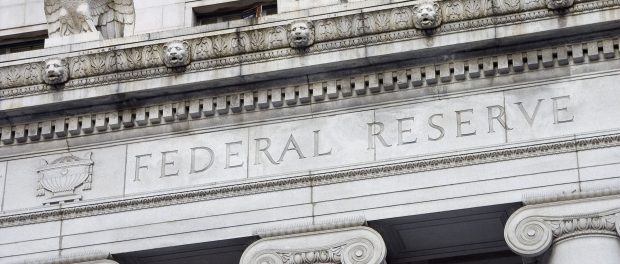Federal Reserve Meetings and Their Impact on Gold Prices


The Federal Reserve may be the central bank of the United States, but when it speaks and acts, its decisions cast a long shadow on more than just U.S. Dollar values against other currencies. It’s choices also radically impact gold prices. This is so much the case that when it is the week of the big bi-monthly meeting, gold prices barely move ahead of the decision and before the subsequent announcement on rates. Once they do act, the impact on gold prices can be significant.
Why It Matters For Gold Prices What the Federal Reserve Says
You may not be aware of the fact that gold is mostly priced in dollars. This has a lot to do with the dollar still being the main reserve currency of the world. Several of the world’s major gold trading hubs are in Chicago and New York as well. Because gold is generally valued in terms of dollars, the U.S. central bank has a dramatic impact on both dollar prices and gold values.
At most of its every other month meetings, the Federal Reserve does not actually raise or lower rates. In these cases, gold prices react to the Fed’s assessment of the U.S. and world economy. They are also watching closely for the Fed to tip its hand with its statement regarding its future policy moves and outlook on rates. If these statements suggest a stronger world economy with less uncertainty, than they can drive down gold prices. Conversely, if they indicate that economic fortunes are declining, gold prices often rise. This is because one tendency of gold prices is to rise in times of economic instability and to fall in times of greater economic certainty.
What the Federal Reserve Says Affects the Dollar and Gold’s Value
Among the various things that the Federal Reserve considers as it meets are the results of U.S. economic data. If the data from the world’s largest economy turns out to be weaker than in the past, the Fed generally offers a dovish message on the future of interest rates at the end of its several day long meeting. When the Fed not only pushes off raising interest rates, but talks down the U.S. economy, the dollar drops as a result. A lower dollar leads to higher gold prices.
Oil prices have been rising as part of the data that the Fed is considering. If the Federal Reserve signals that it is instead concerned about data that shows rising inflation, then it may hint that it will raise rates in the near future. It is not only raising rates that boosts the U.S. dollar and drive down gold prices. Even the threat of raising them at some point in the not too distant future will generally increase the value of the U.S. dollar and drive down the prices of gold. So if the Fed were to signal that it is seriously contemplating an interest rate hike at its next meeting in June, a higher dollar and lower gold prices would be the likely eventual result. This inverse relationship between the U.S. Dollar and gold is one of the key movers in the gold markets and price.
How Rate Changes Affect Gold Prices
The Fed holds all the interest rate cards with its ability to raise and lower these rates. Gold is impacted by changes in these interest rates specifically and directly. Gold prices generally suffer when interest rates rise. The reason for this is worth an examination and explanation. As interest rates go higher, investors are drawn to investments that pay interest. This makes it less advantageous for investors to hold assets that do not provide an interest based yield. Gold bullion is among these types of investments with no yield. For yield hungry traders especially, they do not see much incentive to hold gold as interest rates get higher and higher.
Rising interest rates also tend to give the dollar a boost. As the yield for holding dollar instruments like Treasuries goes up, so does investor interest in holding dollars. A greater demand for Treasuries drives up the value of the dollar this way. Once again, as the dollar rises, gold priced in it tends to go down. If instead interest rates are falling, then the dollar drops and gold generally goes up.
In Conclusion
Gold prices have rallied double digits so far in 2016. A lot of the gain has to do with investor beliefs that the Fed will not raise its interest rates again soon. Softer U.S. data has reinforced this idea so far. Gold markets have acted on the idea that real interest rates will drift lower. The dollar has also become softer on this idea, further strengthening gold. If the Fed were to shift its view toward raising interest rates at its next meeting, these gains could reverse. This is why it is important to remember that gold prices go up and down short term and even medium term. The longer term rising trend of gold is what matters for the value of your retirement accounts and portfolio.

Will Your Retirement Weather the Next Financial Crisis?
Gold has been used as an inflation hedge and a way to preserve wealth for millennia. We partnered with Silver Gold Bull, Canada's top-rated gold company (with over 280,000 five-star reviews), to offer Canadians a low-cost and tax-advantaged way to buy gold and silver through an RRSP/TFSA or another retirement plan.
Request More Info
Website: www.SilverGoldBull.ca
Speak to an Expert: (877) 707-4707
Copyright 2023 Gold RRSP - Helping Canadians invest in physical bullion for retirement
